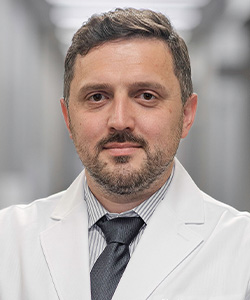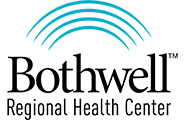Bringing a new pair of hands to health care with Osteopathic Manipulative Treatment

I am trained as an osteopathic family physician and care for my patients in diverse ways. After visiting with them, I often see their faces express positive astonishment that says, “I’ve never had a doctor treat me like that!”
Two types of medical schools exist in the United States. Allopathic schools train MDs (medical doctors), and osteopathic schools train DOs (doctors of osteopathic medicine). The majority of existing physicians are MDs because the number of osteopathic schools is just a fraction of all medical schools. So, what’s the distinction?
A physician (either DO or MD) is required to have earned a four-year bachelor’s degree. The next requirement is acceptance into medical school, which lasts four years. Afterward, the graduated doctor must complete specialty training during residency, which can last from three to seven years depending on the specialty’s complexity. Any training after residency is optional and is called a “fellowship.”
Osteopathic medical students spend several hundred hours of hands-on, guided training during the first two years of school. They learn in-depth anatomy from live patients and train to perform thorough visual and physical structural exams.
This training teaches DO students how to feel the body with their hands and fingers, how to use body landmarks in their evaluation, how to discern subtle differences between “normal” and “abnormal” structural characteristics, how to sense motion restrictions, and how to decipher exam findings and develop a comprehensive diagnosis.
DO students learn multiple ways to treat dysfunctions diagnosed during the physical exam. This part is called Osteopathic Manipulative Treatment (OMT). Finally, they learn how to teach patients to optimize their condition with targeted stretches and strengthening exercises, as well as lifestyle modifications.
Only a small percentage of osteopathic medicine graduates elect to specialize in Osteopathic Neuromusculoskeletal Medicine (ONMM). While all DOs have trained in the basics of osteopathic manipulation, ONMM training is focused on furthering their skill in manipulative medicine. All DOs can practice OMT, but ONMM specialists take it to a different level. I first trained as a family physician for three years before completing the additional one-year ONMM fellowship—which makes me “double-boarded.”
During my patient visits, we talk and I listen. I then perform a thorough examination and summarize what I’ve found. If there’s a chance of treating any given dysfunction, I offer to do it during the visit. Sometimes this is just what the patient needs.
I am often asked whether my treatment is similar to chiropractic. The simplest answer is “yes and no.” There is at most a 10% overlap in OMT and chiropractic. Osteopathic manipulation employs more than 15 different types of techniques, and the “popping” technique is just one option. The majority of my work differs from these thrust techniques.
The broad scope of osteopathic treatment targets the musculoskeletal, nervous, lymphatic, circulatory, fascial and respiratory systems, as well as body organs and their interconnectedness. Newborns and infants can benefit from OMT if they have head molding, latching/feeding difficulties, colic, fussiness, torticollis (wry neck) and much more. Pregnant or postpartum women can find OMT helpful for low back or sacrum pain.
Victims of accidents or sports injuries often benefit if they have whiplash, concussion symptoms, sprains, vague body pains and more. Other conditions often responsive to OMT include certain types of headaches, TMJ (jaw) issues, posture concerns, “frozen shoulder,” pains after various surgeries and plantar fasciitis. Performing artists and athletes can benefit from osteopathic optimization through breathing and range of motion enhancement.
I’m excited to be in Sedalia and that area residents no longer need to travel to Kansas City or Columbia to seek out OMT. See you in clinic soon for all your primary care and OMT needs!
Dr. Eduard Rasputkov joined Bothwell’s medical team in August and is taking new patients at Bothwell Family Medicine on the third floor of the Healing Arts Center. His first language is Russian, and he has lived in the United States since age 2. He has full fluency in English and full comprehension and basic communication in Ukrainian. Dr. Rasputkov and his wife have three children and live in Pettis County. He is the oldest of 11 children and looks forward to winter because it’s prime sauna season.
